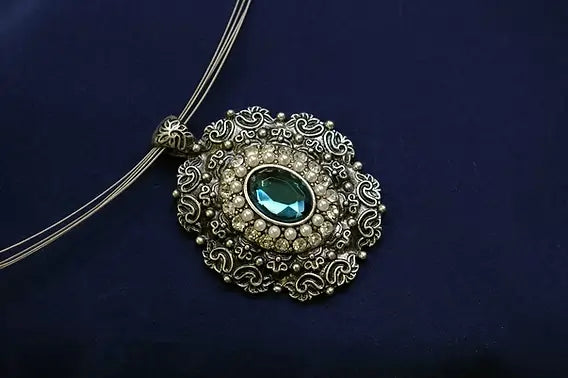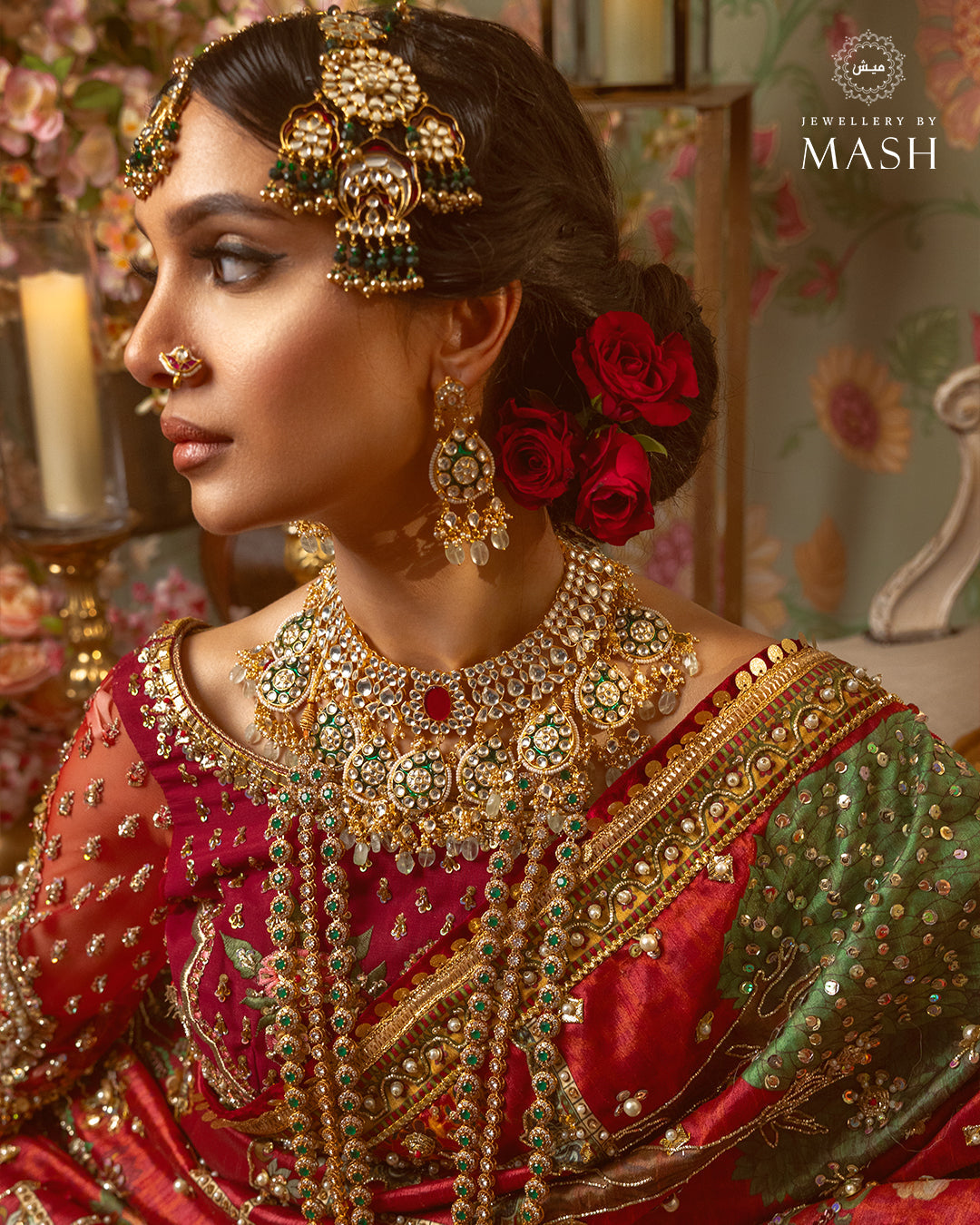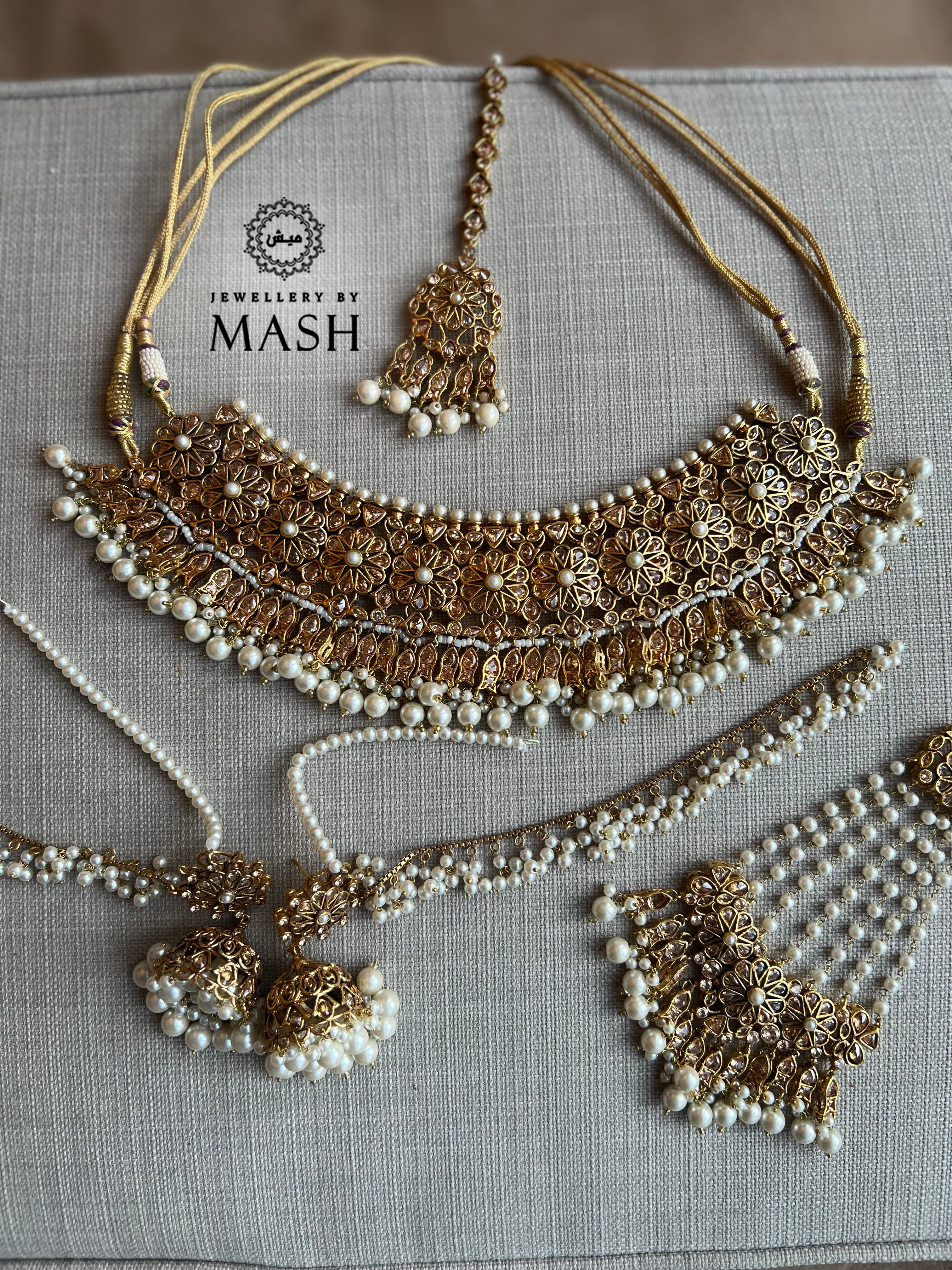Vintage jewelry is more than just old accessories—it holds history, charm, and unique craftsmanship that modern pieces often lack.
Whether it’s a Victorian brooch, an Art Deco ring, or a mid-century necklace, each piece tells a story of the time it was made.
Owning vintage jewelry is like holding a little piece of the past, making it special for both collectors and fashion lovers.
But how do you know if a piece is truly vintage or antique? Identifying vintage jewelry is important for collectors, buyers, and sellers.
Knowing the difference can help you avoid fakes, determine the value of a piece, and even make better investments.
Understanding jewelry hallmarks, maker’s marks, and gemstone settings can help you recognize an authentic vintage piece.
If you're looking for genuine vintage and antique jewelry in the UK, JewelleryByMash is a trusted source.
They offer a carefully selected collection of timeless jewelry, ensuring you get high-quality, authentic pieces.
What is Vintage Jewelry?
Vintage jewelry refers to pieces that are between 50 to 100 years old. These items reflect the unique styles and craftsmanship of their time, making them highly sought after by collectors and enthusiasts.
It is important to understand the difference between vintage, antique, and estate jewelry:
-
Estate Jewelry – Any pre-owned jewelry, regardless of its age. It can be modern, vintage, or antique.
-
Antique Jewelry – Jewelry that is over 100 years old, often featuring intricate designs from eras like the Victorian, Edwardian, or Georgian periods.
-
Vintage Jewelry – Pieces that are between 50 and 100 years old, commonly including styles from the Art Deco, Retro, and Mid-Century periods.
Understanding these differences helps buyers and collectors properly categorize and value jewelry, ensuring they invest in authentic pieces.
Eras of Vintage Jewelry & Their Characteristics
Vintage jewelry styles evolved over time, reflecting the fashion, craftsmanship, and materials of different historical periods.
Here’s a look at the key jewelry eras and their defining characteristics:
Georgian Era (1714–1837)
-
Handmade with intricate craftsmanship.
-
Use of gold and paste gemstones (glass imitations of real stones).
-
Nature-inspired motifs such as flowers and leaves.
-
Jewelry often featured closed-back settings to enhance the sparkle of gemstones.
Victorian Era (1837–1901)
-
Romantic and sentimental designs, including hearts, flowers, and snakes.
-
Popular use of claw-set gemstones, especially diamonds and garnets.
-
Gothic influences in later years, with dark, dramatic styles.
-
Jewelry often contained hidden messages, such as acrostic rings spelling out words with gemstone initials.
Edwardian Era (1901–1910)
-
Light and delicate jewelry designs with filigree details.
-
Use of platinum, pearls, and diamonds for an elegant look.
-
Lace-like patterns and floral motifs were common.
-
Jewelry often featured millegrain settings, giving pieces a fine beaded texture.
Art Nouveau Era (1890–1915)
-
Inspired by nature, featuring designs of flowers, insects, and flowing lines.
-
Use of enamelwork to add color and artistic detail.
-
Curved lines and asymmetry, creating a dreamy, organic aesthetic.
-
Favored materials included opals, moonstones, and semi-precious gems.
Art Deco Era (1920s–1930s)
-
Bold, geometric designs with a modern look.
-
Use of platinum, white gold, and colorful gemstones like sapphires, emeralds, and rubies.
-
Strong influences from Egyptian, African, and Asian art.
-
Jewelry featured sharp angles, symmetry, and contrasting colors.
Mid-Century Era (1940s–1960s)
-
Bold statement pieces with eye-catching designs.
-
Widespread use of yellow gold, reflecting post-war prosperity.
-
Introduction of synthetic gemstones as affordable alternatives.
-
Styles influenced by Hollywood glamour, including multi-string pearl necklaces and oversized cocktail rings.
Each of these eras contributed unique styles and techniques to vintage jewelry, making them fascinating to explore and collect.
How to Identify Vintage Jewelry

One of the best ways to determine if a piece of jewelry is truly vintage is by examining its hallmarks and maker’s marks.
These small engravings can reveal important details about the jewelry’s age, metal content, and origin.
A. Jewelry Hallmarks and Maker’s Marks
1. Importance of UK Assay Marks
In the UK, precious metals are legally required to be hallmarked by one of the country’s assay offices to confirm their authenticity.
These marks can help date vintage jewelry and verify its metal content. The four main UK assay offices are:
-
London Assay Office (Leopard’s head)
-
Birmingham Assay Office (Anchor)
-
Sheffield Assay Office (Rose)
-
Edinburgh Assay Office (Castle)
Each of these offices uses unique symbols, which have changed over time, making them useful for dating vintage jewelry.
2. Gold and Sterling Silver Hallmarks
To confirm the authenticity of gold and sterling silver vintage jewelry, look for these standard UK markings:
-
Gold Hallmarks: 9ct (375), 14ct (585), 18ct (750), 22ct (916).
-
Sterling Silver Hallmarks: 925 (sterling silver), 958 (Britannia silver).
-
Platinum Hallmarks: 850, 900, 950, 999.
Many vintage pieces also have a date letter, indicating the year the jewelry was hallmarked.
3. Identifying Maker’s Marks
Maker’s marks are unique stamps left by jewelry designers or manufacturers, helping trace a piece back to its creator.
Some well-known British vintage jewelry brands with identifiable maker’s marks include:
-
Cartier London
-
Asprey
-
Garrard & Co. (Former Crown Jeweller)
-
Boodles
-
Hancocks & Co.
If a piece lacks hallmarks but has a recognizable maker’s mark, it can still hold significant value as a collectible vintage item.
Checking hallmarks and maker’s marks is one of the easiest ways to determine whether a piece is truly vintage, ensuring authenticity for buyers, collectors, and sellers.
B. Examining Design Styles and Materials
The design, materials, and craftsmanship of a jewelry piece can provide important clues about its age and authenticity.
1. Metal Types Used in Vintage Jewelry
Different metals were popular in different eras, which can help in identifying a vintage piece:
-
Gold – Common in Victorian jewelry, often in 9ct, 14ct, 18ct, or 22ct purity. Older gold pieces may have a slightly warmer tone due to age and wear.
-
Sterling Silver – Frequently used in Art Nouveau and Art Deco jewelry, often marked with 925 or a UK hallmark.
-
Platinum – Popular in Edwardian and Art Deco jewelry, valued for its strength and ability to hold intricate designs.
2. Common Gemstones in Vintage Jewelry
The type and cut of gemstones can also indicate the era of a jewelry piece:
-
Diamonds – Older cuts, such as Old Mine Cut or Rose Cut, are often found in Georgian and Victorian jewelry.
-
Pearls – A signature of Edwardian jewelry, often paired with platinum for delicate designs.
-
Black Glass – Common in mourning jewelry during the Victorian era as a substitute for jet.
-
Tortoiseshell – Used in mid-century jewelry, though now regulated due to conservation laws.
3. Jewelry Construction: Handmade vs. Machine-Made
The way a piece is constructed can help distinguish true vintage jewelry from modern reproductions:
-
Handmade Jewelry – Older pieces, especially Georgian and Victorian jewelry, were handcrafted, often showing slight asymmetry.
-
Machine-Made Jewelry – Became more common during the Art Deco and Mid-Century eras, featuring cleaner, more precise lines due to advanced manufacturing techniques.
Examining metals, gemstones, and construction is a key step in vintage jewelry identification, helping collectors and buyers understand the history and authenticity of a piece.
C. Clasp and Fastening Types for Dating Jewelry
The type of clasp or fastening used in a jewelry piece can be a strong indicator of its age.
Over time, jewelry designers introduced new clasp styles, making them useful for vintage jewelry identification.
1. Box Clasps (Victorian & Edwardian Eras)
-
Common in Victorian (1837–1901) and Edwardian (1901–1910) jewelry.
-
Features a small box-like mechanism with a tongue that slides in and locks securely.
-
Often decorated with filigree or gemstone embellishments.
2. Barrel Clasps (Mid-Century Era, 1940s–1960s)
-
Found in mid-century jewelry, especially beaded necklaces and bracelets.
-
Cylindrical in shape, with a screw-in or twist mechanism.
-
Durable but slightly harder to fasten compared to modern clasps.
3. Fishhook Clasps (1920s & Art Deco Era)
-
Delicate and elegant, fishhook clasps were common in 1920s jewelry.
-
Typically found on pearl necklaces and fine bracelets.
-
Features a hook that slides into a decorative casing.
4. Lobster Claw Clasps (Modern Era, Post-1970s)
-
Not considered vintage—became popular in the 1970s and beyond.
-
Features a spring-loaded clasp shaped like a lobster’s claw.
-
Rarely found in true vintage or antique jewelry.
By examining the clasp type, you can get valuable insights into the age and authenticity of a jewelry piece, making it easier to determine if it qualifies as vintage jewelry.
D. Signs of Wear & Patina
One of the easiest ways to identify vintage jewelry is by examining its natural wear and patina.
Over time, authentic pieces develop unique signs of aging that add to their character and value.
1. Natural Oxidation and Aging Patterns
-
Sterling silver and gold jewelry often develop a patina, a thin layer of oxidation that gives an aged look.
-
Gold-plated jewelry may show signs of fading, revealing the base metal underneath.
-
Pearls and gemstones may have slight surface wear, especially in rings and bracelets.
2. Scratches and Softened Edges
-
Handmade vintage jewelry often shows small imperfections in the metalwork.
-
Rings and bracelets usually have softened edges due to long-term wear.
-
Watch for natural wear in areas that would frequently come into contact with skin or clothing.
3. Avoiding Over-Polishing
-
Over-polishing vintage jewelry can remove its original finish and reduce its value.
-
Patina is desirable in antique jewelry and can be a sign of authenticity.
-
If unsure, professional jewelry appraisal for vintage pieces can help assess the condition without damaging its value.
A well-preserved vintage jewelry piece will have a balance of wear and care, helping buyers and collectors determine its authenticity.
4. How to Value Vintage Jewelry
Determining the value of vintage jewelry requires a combination of expert evaluation and an understanding of key factors that affect pricing.
Whether you’re a collector, seller, or buyer, knowing what makes a piece valuable can help you make informed decisions.
A. Jewelry Appraisal for Vintage Pieces
A professional jewelry appraisal is the most reliable way to determine the value of a vintage or antique piece. Experts examine factors such as:
-
Authenticity – Verifying hallmarks, maker’s marks, and craftsmanship.
-
Materials – Assessing the gold, sterling silver, or platinum content.
-
Gemstone identification – Checking if diamonds, pearls, or other stones are natural or synthetic.
For an accurate valuation, it’s best to consult a certified jewelry appraiser or a specialist in estate jewelry.
B. Factors That Affect Value
The worth of vintage jewelry depends on multiple factors, including:
-
Materials – Pieces made with gold, platinum, or sterling silver are more valuable than those with base metals.
-
Craftsmanship – Handmade designs from Victorian, Art Deco, or Edwardian eras hold higher value.
-
Rarity – Limited production or unique designs increase desirability.
-
Designer Significance – Jewelry from iconic brands like Cartier London, Asprey, or Garrard & Co. is highly sought after.
-
Condition – Items in original, well-preserved condition are more valuable than heavily repaired or altered pieces.
C. UK Jewelry Valuation Services
If you need to get a vintage jewellery valuation in the UK, consider these options:
-
Birmingham Assay Office – Offers hallmark verification and expert valuation.
-
London Antique Jewellery Fair – A great place to connect with specialists.
-
JewelryByMash – A trusted online store in the UK with a collection of authentic vintage and antique jewelry.
-
Independent appraisers and auction houses – Many antique fairs and markets have experts who provide on-the-spot valuations.
Understanding the value of vintage jewelry ensures you get a fair price when buying, selling, or insuring your pieces.
5. Caring for Vintage Jewelry
Proper care ensures that vintage jewelry maintains its beauty and value over time. Unlike modern pieces, older jewelry requires gentle handling and special storage methods to prevent damage.
A. How to Clean Vintage Jewelry
Cleaning vintage and antique gold jewelry requires extra caution to avoid damaging delicate metals and gemstones. Here’s how to safely clean your pieces:
-
Avoid harsh chemicals – Never use bleach, ammonia, or ultrasonic cleaners, as they can damage gold, sterling silver, and gemstones.
-
Use a soft cloth – A microfiber or jewelry polishing cloth helps remove dirt and tarnish without scratching the surface.
-
Mild soap and water – For most pieces, gently washing with lukewarm water and a drop of mild soap is safe. Dry thoroughly before storing.
-
Be cautious with pearls and enamel – Multi-string pearl necklaces and enamel jewelry should only be wiped with a dry or slightly damp cloth.
B. Jewelry Storage Solutions
Proper storage is essential to prevent tarnishing, scratches, and moisture damage. Follow these tips:
-
Store in a dry place – Humidity can cause oxidation on silver and gold jewelry. Use silica gel packs in storage boxes to reduce moisture.
-
Use soft-lined jewelry boxes – Store pieces separately to avoid scratches, especially for Art Deco jewelry with intricate designs.
-
Wrap delicate items in cloth – Black glass jewelry, tortoiseshell jewelry, and pearls are fragile and should be wrapped in soft fabric or tissue paper.
C. When to Seek Professional Cleaning & Restoration
Certain vintage pieces require expert restoration to maintain their integrity. Seek professional help if:
-
A gemstone is loose or missing – An expert jeweler can securely reset diamonds, pearls, or other stones.
-
Metal settings are damaged – Gold and sterling silver hallmarks should remain intact to preserve value.
-
Antique pieces need polishing – Avoid over-polishing, as it can remove patina, which adds to the jewelry’s character.
For UK-based vintage jewelry maintenance, consider expert services at JewelleryByMash, which specializes in authentic vintage jewelry and restoration guidance.
6. Where to Buy and Sell Vintage Jewelry in the UK
Whether you’re looking to expand your collection or sell a cherished piece, the UK offers a variety of trusted platforms and markets for vintage and antique jewelry.
A. Trusted Online Stores
Buying from reputable retailers ensures authenticity and quality. One of the best online stores for vintage and antique jewelry in the UK is JewelleryByMash, which offers a curated collection of estate jewelry, Victorian jewelry, Art Deco jewelry, and more.
New Arrivals at JewelleryByMash
- Genevieve Set – Timeless elegance with a touch of vintage charm.
- Julia Set – Delicate and sophisticated, perfect for any occasion.
- Gabriel Set – A bold statement of luxury and refinement.
- Manon Set – Nature-inspired beauty with intricate details.
- Rula Set – A blend of modern grace and classic allure.
Other trusted online retailers include:
-
Love Antiques – A well-known platform for verified antique sellers.
-
The Antique Jewellery Company – Specializes in Georgian, Victorian, and Edwardian jewelry.
B. UK Antique Fairs & Vintage Markets
For those who prefer to buy and sell in person, antique fairs and vintage markets are excellent options:
-
Portobello Road Market (London) – One of the most famous antique jewelry hubs in the UK.
-
Birmingham Jewellery Quarter – A historic district with a wide range of vintage jewelry stores.
-
The Great Antique & Vintage Jewellery Fair – A popular event featuring expert dealers.
C. UK Laws on Selling Antique Jewelry
When selling jewelry in the UK, either vintage or antique, it’s essential to understand legal requirements:
-
Hallmarking Laws – Jewelry must have proper UK assay marks if it contains precious metals.
-
Consumer Protection – Sellers must provide accurate descriptions to comply with the UK’s Trading Standards.
-
Antique Declaration for Gold & Silver – Some pieces may be exempt from modern hallmarking if proven to be over 100 years old.
For a secure selling experience, consider professional jewelry appraisal for vintage pieces before listing them for sale.
7. Avoiding Fake Vintage Jewelry
With the rising popularity of vintage and antique jewelry, counterfeit pieces are becoming more common.
Knowing how to spot fake vintage jewelry can save you from scams and ensure that you invest in authentic, high-quality pieces.
A. Warning Signs and Common Scams
Fake vintage jewelry often mimics old styles but lacks genuine craftsmanship. Be cautious of:
-
Suspiciously low prices – If a deal seems too good to be true, it probably is.
-
Modern reproductions – Some sellers pass off replicas as authentic vintage jewelry.
-
Questionable hallmarks – Fake pieces may have stamps that appear too fresh, uneven, or incorrect.
-
Poor craftsmanship – Authentic vintage jewelry was often handmade with high attention to detail. Look for signs of machine production that wouldn't match the era.
B. How to Identify Old Jewelry Markings
One of the best ways to ensure authenticity is by checking for jewelry hallmarks and maker’s marks. Key things to look for:
-
UK Assay Marks – Genuine pieces made of gold, silver, or platinum should have stamps from London, Birmingham, Sheffield, or Edinburgh Assay Offices.
-
Date Letters and Maker’s Marks – These symbols help determine when and where a piece was made.
-
Metal Purity Stamps – Authentic gold and sterling silver hallmarks include “925” for silver and “750” for 18K gold. Checking for stamps like ‘585’ on gold (14K) can confirm its authenticity, as lower-quality plated pieces tend to tarnish over time.
-
Wear and Aging – Real vintage pieces show natural patina, slight imperfections, and signs of wear, unlike artificially aged replicas.
If you're unsure, getting a jewelry appraisal for vintage pieces from a certified expert can confirm authenticity.
8. Investing in Vintage Jewelry
Many collectors and buyers see vintage jewelry as more than just an accessory—it’s a valuable investment.
Whether you’re purchasing for personal enjoyment or financial gain, understanding key factors can help you make a smart decision.
A. Is Vintage Jewelry a Good Investment?
Investing in vintage and antique jewelry can be profitable, but several factors affect its long-term value:
-
Rarity and Demand – Unique pieces from sought-after eras like Art Deco jewelry or Victorian jewelry often appreciate in value.
-
Material and Craftsmanship – Jewelry made from gold, platinum, and sterling silver with high-quality gemstones tends to hold its worth.
-
Designer Significance – Pieces from well-known brands or jewelers, such as Cartier London or Garrard & Co., can command high resale prices.
-
Condition and Authenticity – Well-preserved pieces with original settings and authentic hallmarks are more valuable than restored or altered jewelry.
-
Market Trends – The value of estate jewelry and vintage pieces fluctuates based on trends, collector interest, and global economic conditions.
To ensure a smart purchase, consider getting a jewelry appraisal for vintage pieces to confirm authenticity and value.
B. Jewelry Insurance for Vintage Pieces
Since vintage jewelry can be both financially and sentimentally valuable, jewelry insurance is essential. Here’s why:
-
Protection Against Loss or Theft – If your jewelry is lost or stolen, insurance ensures you’re compensated for its value.
-
Coverage for Damage – Vintage pieces can be delicate. Insurance helps cover repairs if a piece gets damaged.
-
Specialized Insurance Providers – Consider using services like BriteCo Jewelry Insurance or UK-based insurers specializing in luxury jewelry insurance.
-
Getting an Accurate Valuation – Before insuring your piece, have it appraised by a UK jewelry valuation service to determine its true worth.
Final Thoughts: Unlocking the Beauty of Vintage Jewelry
Identifying vintage jewelry requires a keen eye for hallmarks, craftsmanship, materials, and design eras.
Whether you’re a collector, buyer, or seller, understanding these elements ensures you invest in genuine, high-quality pieces.
For those looking to add authentic vintage jewelry to their collection, look for a trusted destination in the UK, offering carefully curated, one-of-a-kind treasures.
If you already own vintage pieces, consider a professional jewelry appraisal to determine their value.
Explore timeless beauty today—visit JewelleryByMash for stunning vintage finds or expert valuation services!



